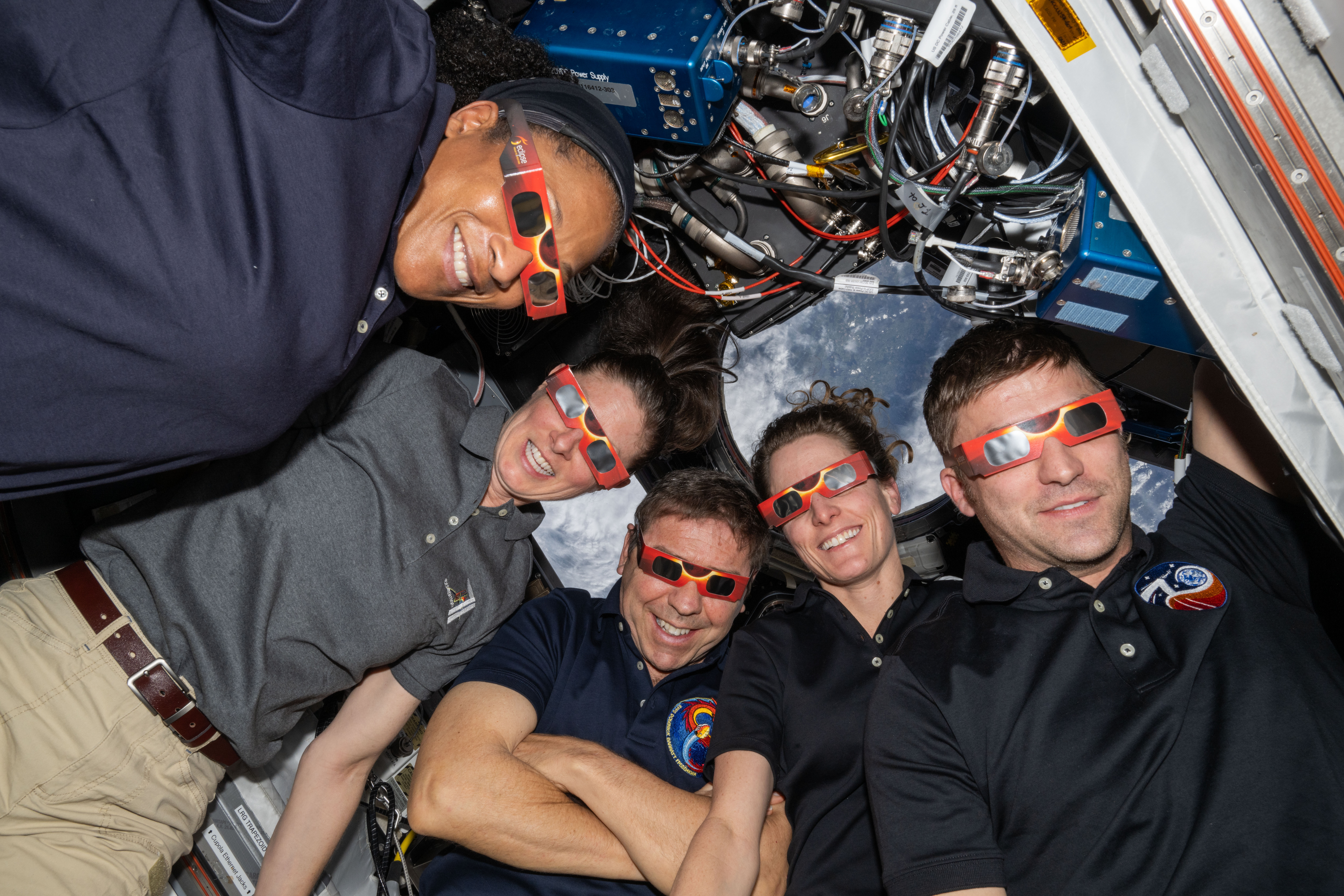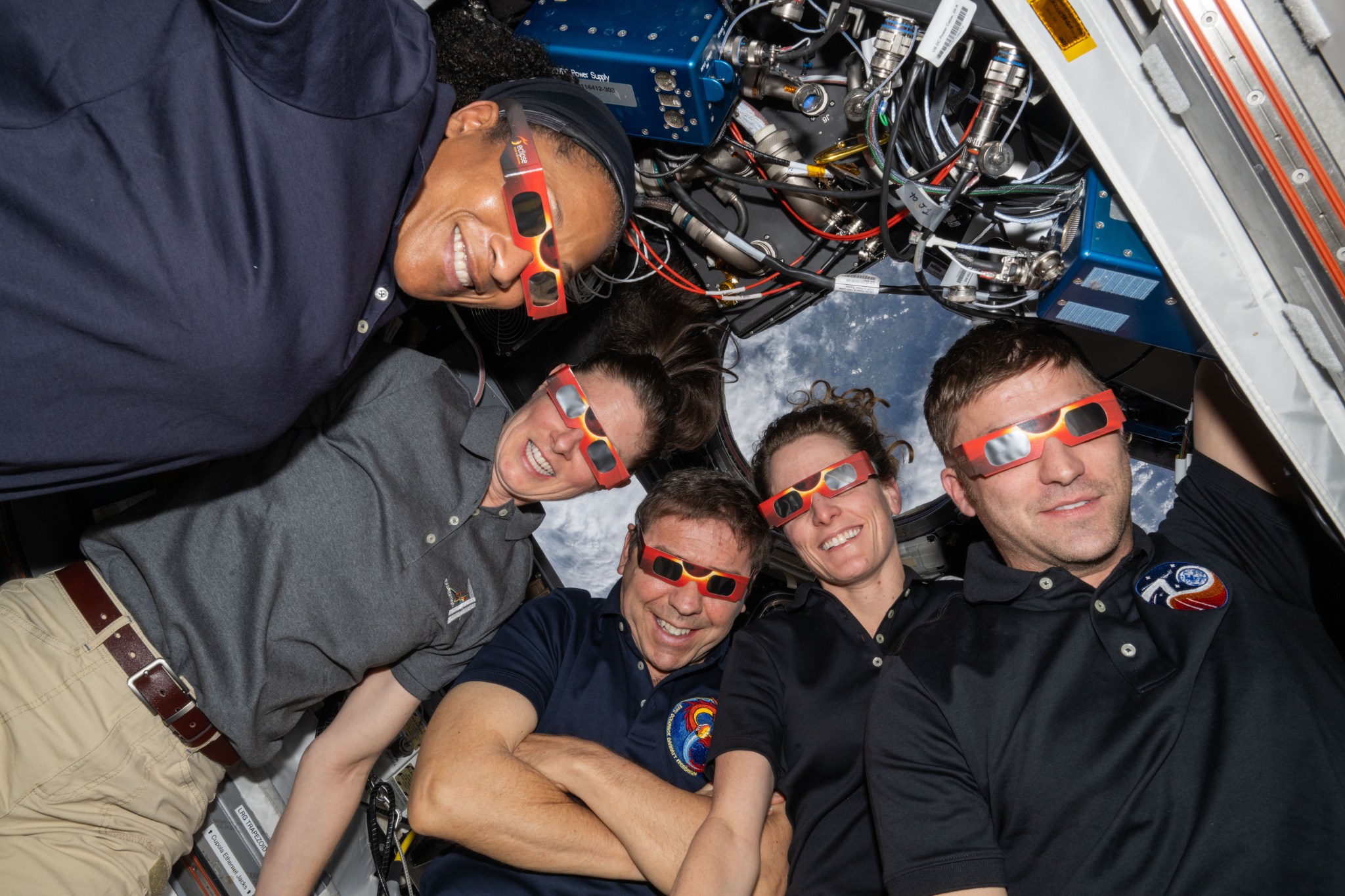Safety First!
NASA astronauts aboard the International Space Station wear eclipse glasses in this image from March 26, 2024. While millions of people on Earth experience the total solar eclipse on April 8, 2024, the space station crew will have the opportunity to see it from 250 miles above our planet. Except during the brief period when […]


NASA astronauts aboard the International Space Station wear eclipse glasses in this image from March 26, 2024. While millions of people on Earth experience the total solar eclipse on April 8, 2024, the space station crew will have the opportunity to see it from 250 miles above our planet. Except during the brief period when the Moon completely blocks the Sun’s bright face, it is not safe to look directly at the Sun without specialized eye protection for solar viewing. On Earth, you must look through safe solar viewing glasses (“eclipse glasses”) with the ISO 12312-2 international standard or a safe handheld solar viewer at all times. If the crew has opportunity to directly image the eclipse through space station windows, they will use a handheld camera equipped with a solar filter and will not look at the Sun directly.
Based on current orbital position and ground track predictions for the International Space Station, astronauts aboard the orbiting laboratory will have three opportunities to view the ground shadow (penumbra and umbra) of the Moon as it tracks across the Earth surface during the total solar eclipse. After encountering the eclipse shadow above the Pacific Ocean, then during a pass from the New Zealand area to California and Idaho, the space station is predicted to encounter the eclipse during a time of near-to-full totality while over Maine and New Brunswick around 3:30 p.m. EDT.
For those who won’t be in the path of totality or on the space station, NASA will have live coverage of the eclipse.
Image Credit: NASA/Loral O’Hara
What's Your Reaction?









































